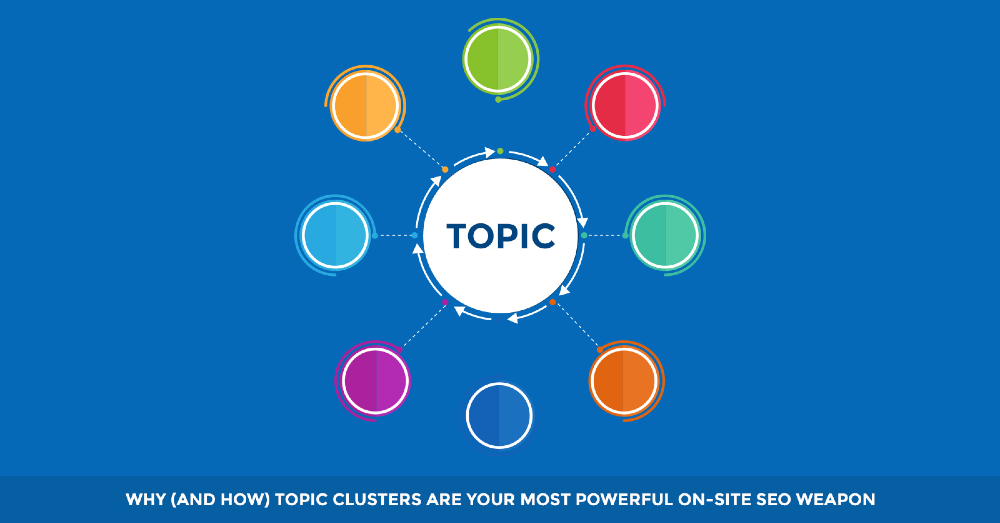One of the latest trends in content marketing is SEO topic clusters, which have been deemed the “next evolution of SEO.”
What are topic clusters?
Simply put, topic clusters are a way of grouping content on your website and consists of a core topic “pillar page” and related subtopic content pages. The content pages link back to the pillar page and to each other. The pillar page covers a broad topic and the cluster content pages are more specific, related topics falling under the umbrella of the pillar page.
Keywords
In the past, searches used to be concentrated only on keywords but have now evolved to focus on topics. So now’s the time to start concentrating on being the most relevant content resource on a topic rather than just zoning in on keywords. Not only will this strategy boost your Google rankings, but it also helps establish your brand as an authority and offers a more organized, easier experience for website users. Don’t forget, you still need to choose keywords for each page as well as topic clustering, as they complement each other. So how do you create topic clusters?
Choose a topic
Decide which topic you want Google to rank. The umbrella topic area, which will form your pillar page, must be a broad topic you want to position yourself as an expert on and should be a key topic for your company. It should also be a topic that can generate enough articles from it. A good pillar page should contain valuable content, both internal and external links, and high-quality images.
Content Clusters
You can have anywhere from two to 10 clusters, so make sure they’re relevant to the pillar page and that they include quality content. If you know your industry and audience well it should be easy to come up with enough interesting, relevant, and useful subtopic ideas. Additional keyword searches for each page are also important in this step.
Review existing content
What content do you already have that can be updated and linked to your pillar page? This saves time and allows you to maximize existing articles.
Link them all together
When you’ve completed your pillar page and content clusters make sure you interlink your pages. All your content clusters need to link back to your pillar page and to each other, and your pillar page needs to link out to your cluster pages.
The results are in…
Then sit back and wait to see the results! The beauty and reasoning behind SEO topic clusters are that once one page starts to rank better, it benefits all your pages and they follow suit!
This post may contain affiliate links. Meaning a commission is given should you decide to make a purchase through these links, at no cost to you. All products shown are researched and tested to give an accurate review for you.




